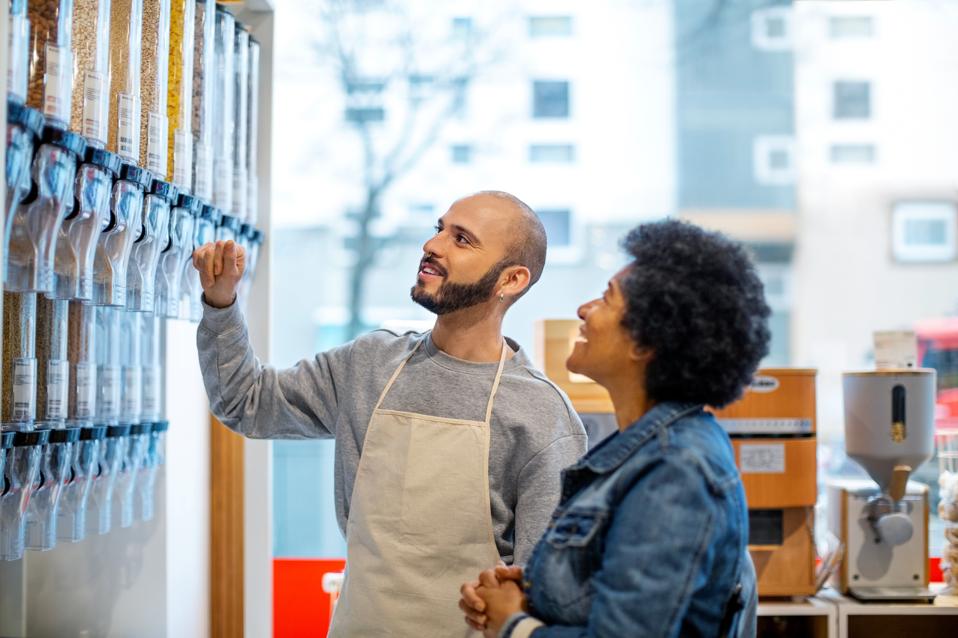Why do customers come back to the places where they love to do business? Our annual customer experience research ranked the top experiences that get customers to come back:
- Helpful employees
- Knowledgeable employees
- Friendly employees
- A convenient experience
- Hassle-free shipping and delivery
- Easy returns
- Personalized experiences
- Empathy
The decision to come back could include any one of these or a combination of items on this list—or anything else that the customer experiences the first or last time they did business with the company or brand. The point is that it’s not the experience itself that drives loyalty—it’s the memory of the experience that truly determines loyalty.
This subtle but powerful distinction explains why some businesses enjoy fierce loyalty. The customer’s memory creates an emotional connection that transforms a simple transaction into one of many interactions—in other words, a repeat and/or loyal customer. A recent MarTech article about creating these emotional connections through CX memories and how B2B and B2C brands are winning over customers with “memory-driven CX” included some compelling ideas that validate this concept. The article emphasized the power of a sentence that starts with the words, “Remember when. …” It turns out that the memory of a good experience can boost dopamine in the brain, and the result is that customers are more likely to trust and stay with the brand.
And that is the basis of an emotional connection. Dopamine is a chemical the brain releases that makes you feel good. This chemical release potentially happens twice: during the actual interaction with the brand and when the customer recalls the interaction at a later time and date.
This doesn’t happen by accident. Just as a brand can be purposeful about giving the customer an experience worthy of remembering, it can also be purposeful about getting the customer to recall the experience.
Certain companies have done this at scale. Chewy, the online pet supply retailer, sends birthday cards to its customers’ pets. The cards are often personalized with the pet’s name. Starbucks sends its “members” a free drink or food item for their birthday. It also celebrates “coffee anniversaries,” reminding customers of when they first joined its rewards program. Netflix sends a “What We Watched” summary of what its subscribers have watched in the past year.
You don’t have to be a recognizable brand to do this. Any size company—in any industry—can do the same with a little thought and this five-step process:
- Create the Experience: First, you must deliver an experience that is positive and worth remembering.
- Identify Key Touchpoints: Map the customer journey (if you haven’t already done so) and identify the key touchpoints that could have the highest emotional impact.
- Enhance the Key Touchpoints: Once you’ve identified the impactful touchpoints, engineer them to become memorable. For example, Trader Joe’s, the grocery store chain, trains its employees to interact with customers when they check out, enthusiastically commenting about what’s in the customer’s cart. This last impression leaves a lasting impression.
- Design a Follow-Up Campaign: Design a campaign similar to Chewy, Starbucks or Netflix that reminds the customer why they enjoy doing business with you.
- Measure the Impact: Don’t assume the prior four steps are working. Ask or survey your customers to ensure you’ve created the “Remember When” experience that will help drive repeat business.
When customers are excited about their experience, they say, “I’ll be back.” Taking that to the next level is doing something that gets the customer to think back on the experience, creating a “Remember When” dopamine reaction moment. That reinforces the original (or last) experience the customer had with you. By deliberately creating experiences worth remembering and then helping customers remember those memories, you are increasing the chances of the customer coming back. And the more they come back, the more likely they are to become a coveted loyal customer.

